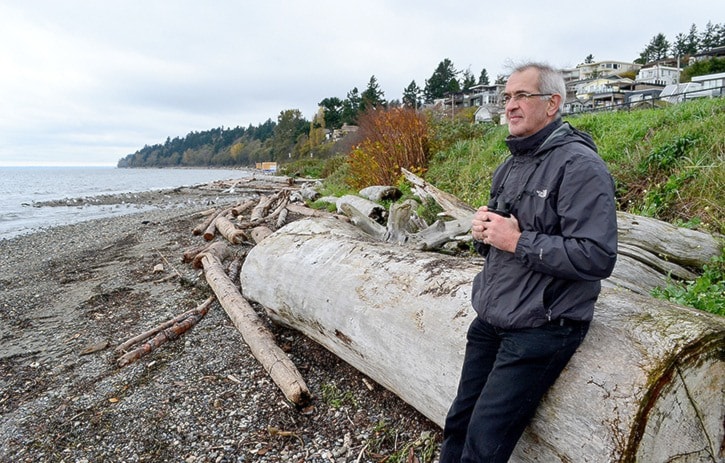A months-long study aimed at determining why male Harlequin ducks that call the White Rock/Crescent Beach shoreline home have stopped returning to molt has identified where the sea ducks have been disappearing to over the past decade.
But White Rock scientist Sean Boyd said why they’re now taking care of business “way up the coast” when they used to do it locally remains a mystery – and may stay that way.
“This is happening for both (White Rock) and (Hornby Island) males,” Boyd said. “This was totally unexpected and I still don’t know why, and may never know.”
 The study – jointly funded by Environment Canada and the Sea Duck Joint Venture – began last March with the implanting of 14 of the White Rock ducks (seven male and seven female) with satellite transmitters that enabled Boyd to live-track their movements and “site-fidelity.”
The study – jointly funded by Environment Canada and the Sea Duck Joint Venture – began last March with the implanting of 14 of the White Rock ducks (seven male and seven female) with satellite transmitters that enabled Boyd to live-track their movements and “site-fidelity.”
(Another 22 ducks were marked at Hornby Island.)
Over the months that followed, he confirmed that the females head to the Rocky Mountains and Kootenay-region streams to breed.
But while Boyd had expected to find the males molting not far from home, he discovered they’ve actually been heading as far north as Prince Rupert.
As he did before starting the survey, Boyd suspects that factors such as disturbance and eagle predation may explain the change of habit, but he also wonders if climate change plays a role.
“I don’t know if we’ll ever find out,” he said.
And while the survey also didn’t solve why the population is declining, Boyd said it was “really useful.” He would never have known that the change in the migration habits of the Harlequins is not responsible for the decline in population without the satellite-transmitter data.
Boyd said he plans to continue monitoring the ducks, to get a better sense of their movement between White Rock, Point Roberts and Birch Bay, until the batteries in their transmitters fail.
Next up, he’s hoping to assist biologists in the northern U.S. – as far east as Wyoming and south to Oregon – and Alberta with a similar project.
“Harlequin ducks are really a species of concern in all of the northern states,” he said.
If funding can be obtained, Boyd will spend up to three weeks next spring helping capture and implant seabirds there.
Other projects being considered include ones that would involve tracking migration habits of smaller birds such as western sandpipers.
Boyd credited advances in technology with making such projects possible.
It “allows us to mark smaller and smaller birds… small birds that could never be marked before,” he said. There’s “whole new avenues for study that we could never do before.”
